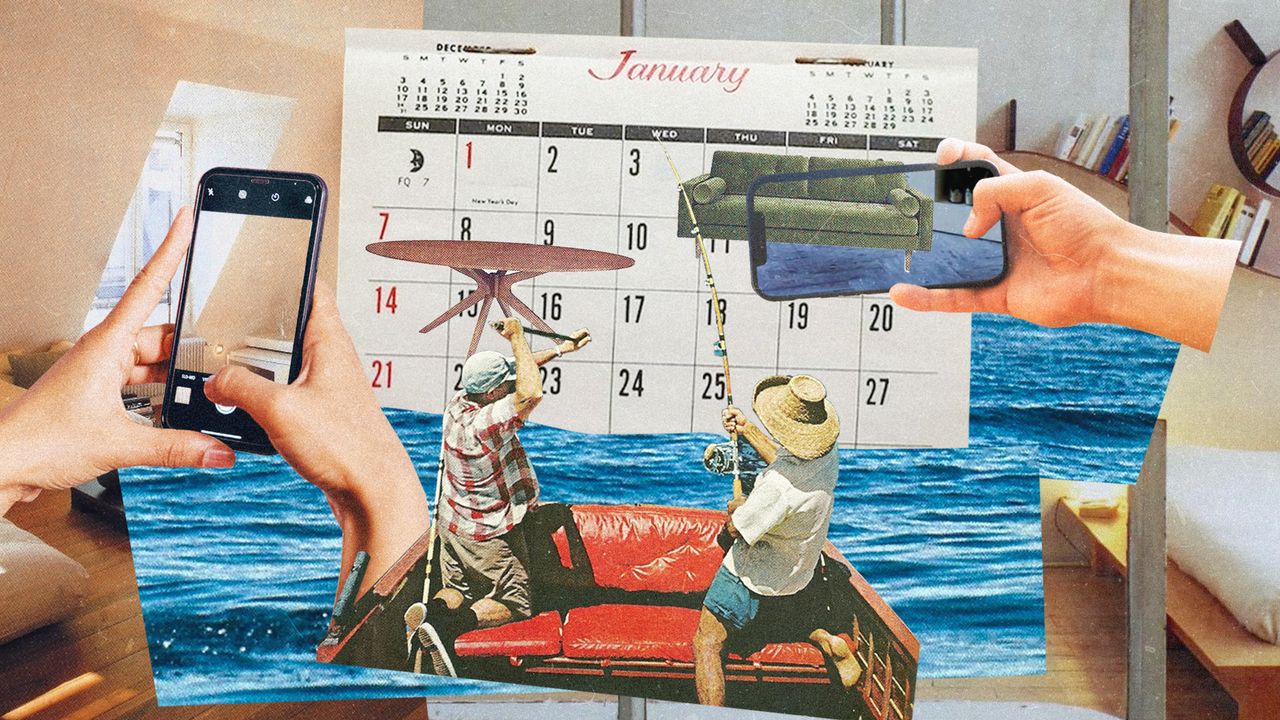Posting images of fabric swatches and interiors you admire can not only act as a virtual mood board for you, but it will also give potential clients a deeper understanding of your design eye.
Dare to try a…dating app?
Dating apps like Hinge, Bumble, and Tinder might have revolutionized the modern-day meet-cute, but for designer Kelly Martin those platforms helped her break into bolder projects and a new demographic. “A male friend of mine was talking about how ‘dudes’ apartments’ aren’t usually acceptable for bringing dates home,” she explains. “And that men would probably appreciate a designer’s eye to make them appear to have more taste and sophistication.”
So, with the help of her friend, Martin created a profile to attract new clients. To keep her presence strictly professional, she filled her profile with marketing materials. Though Martin admits many of her suitors were more focused on dating than design, she said the tactic did draw in some prospective clients. “It was worth the ridiculousness for that,” she says.
Conjure a Craigslist listing
Nowadays, Craigslist is a great destination for secondhand furniture and the occasional apartment listing. But over 15 years ago, it was how Dan Mazzarini forayed into residential design. “I was talking to a friend that I was helping with an apartment, and I think he said he had looked and posted for designers on Craigslist,” says the principal and creative director of AD PRO Directory studio BHDM. “When I got home I took a look, and there were all these posts for people looking for weekend warrior kinds of designers. So I tried a few!”
Mazzarini would respond to ads looking for short-term projects—he says Trading Spaces influenced people’s desire for “quick fixes,” but the lack of modern technology made it trickier to DIY—and racked up some clients along the way. “I did help these roommates who lived in Harlem reupholster chairs,” he recalls. “They were in awe of how making the right decisions, and (a lot) of elbow grease totally changed their space. It was fun to work with them, and their gratitude was sincere.”
In addition to getting some clients, these smaller jobs taught Mazzarini important lessons like navigating a tight budget or timeline and communicating with vendors. (Translation? Everything he needed to build his firm.) “My business has grown and evolved, but I still think there is no better reward than a happy residential client,” he says.
Revive rejected clients
A client who might have initially passed on your proposal doesn’t mean it’s a “no” forever—just ask Noelle Harvey of Sunday House Interior Design in Portland, Oregon. Harvey’s AD PRO Directory firm presented a project scheme to a potential customer, who ultimately declined working together. Months later, a member of the design team went to a dental office for a teeth cleaning; the dentist turned out to be that could-have-been client. After chatting for a bit, the employee learned the client was unhappy with the work that had been done by another designer and hired Sunday House to make some updates for her.
“Always remember that anyone could become a client,” Harvey advises. “The client got really comfortable with us and we became more than just a website and an email; it’s important to remember that everyone is human.”
That said, Harvey admits there’s a fine line between persistent and pushy, so tread lightly. She says: “My team member went in with the mindset of not bringing it up if it didn’t come up, but if it did, letting it play out.”
Grow your business with the AD PRO Directory


